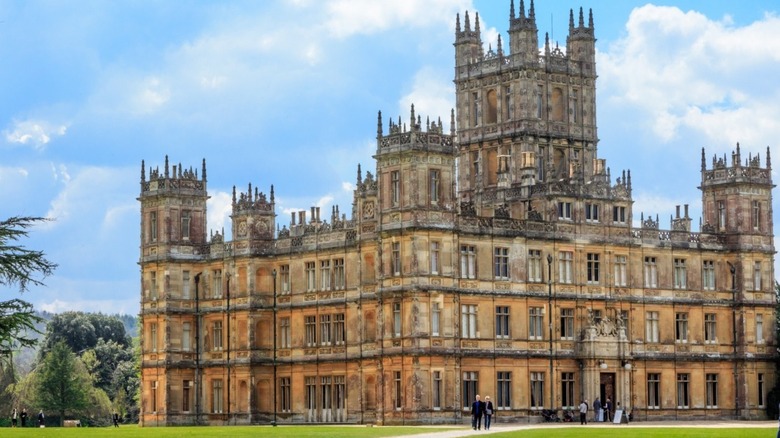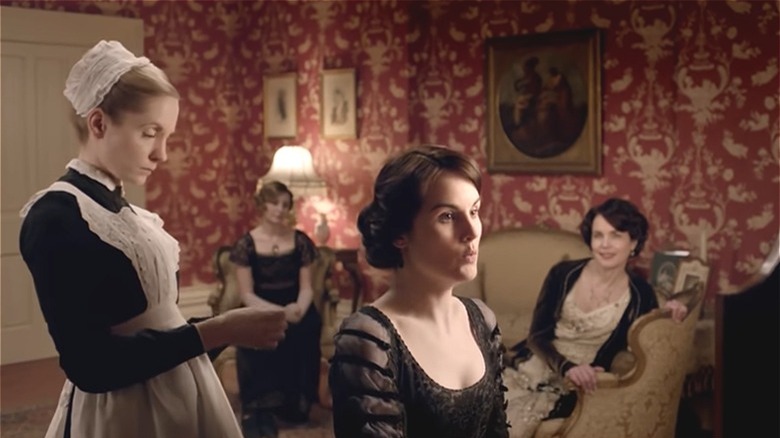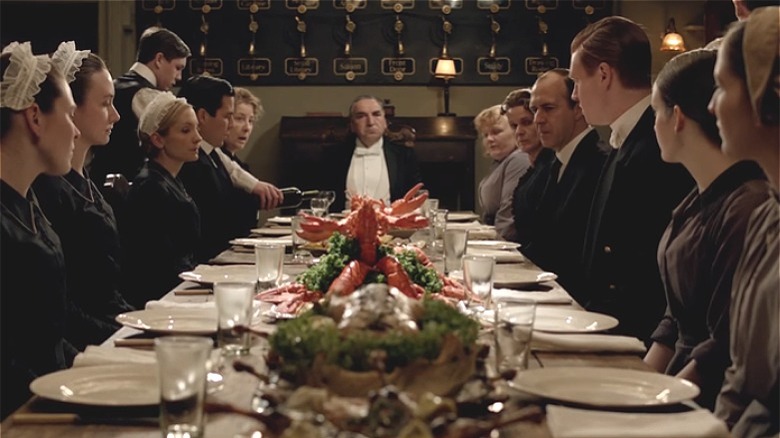What Downton Abbey Gets Completely Wrong About Early 1900s Servants
If you have watched any TV in the last 15 years or so, you probably have noticed a rise in the number of historically themed shows and movies. Often referred to as period dramas, these types of productions have taken the entertainment industry by storm. Shows like "Outlander," "The Last Kingdom," and "The Great" (all via IMDb) are superb examples of historical period dramas that have become extremely popular in the last few years. One of the first series to spark society's interest in this genre was "Downton Abbey" (also via IMDb).
It is likely that even if you haven't watched the show, you have probably heard of it. The program follows the lives of the aristocratic Crawley family and their servants, who all reside on the family estate, known as Downton Abbey. Some of the most recognizable characters include the Earl and Countess of Grantham, their three daughters (Mary, Edith and Sybil Crawley), and the dowager Countess of Grantham, Violet Crawley. In addition to the family, you have their extensive household staff, who include Mr. Carson, the head butler; Mrs. Hughes, the head housekeeper; Thomas Barrow, the footman; Mr. Bates, the valet; and Anna, the lady in waiting.
Too close for comfort
As with any show set in times that have passed, the question always arises as to the accuracy of the portrayal of events, even if the show is historical fiction, like "Downton." People will question costumes, props, and speech patterns. One of the most resounding questions is about the depictions of the relationships between the servants and the aristocratic family which they serve. According to some, the way these connections were presented on screen was not accurate in the slightest.
In most of the episodes of the show, the relations between the staff and the Crawleys appears to be pretty close and rather personal in nature. This cozy presentation was described by one historian as being "completely wrong and infuriating to watch," per Wales Online. One of the major complaints is that the Crawley family is way too friendly and kind to their employees and blatantly crosses the line in what is often considered a professional relationship. According to British Heritage Travel, when running houses of large sizes, duties were very regimented, and the servants were often ordered to stay out of sight. Usage of back entrances and hidden staircases made this easier to accomplish, so it is fair to question whether a family with the status of the Crawleys would interact so freely with their staff.
Hiding the harsh reality
While it seems unlikely that a family like the Crawleys would have close interpersonal relationships with their staff, there are other issues with how the serving staff of Downton is portrayed. This one has to do with the cleanliness of the employees. According to the Huffington Post, the Downton servants were portrayed as way too clean. (Wales Online uses the word "grubby.") In reality, they would have been a lot dirtier, and likely would have smelled badly.
In addition to the lack of personal relationship and cleanliness that the household staff would have likely been privy to in reality, there is another pressing issue from the historical record that the series ignores. That issue was violence against the staff, particularly against the female employees. In one episode, a violent act does take place involving two servants, down in the serving quarters beneath the house. According to Huffington Post, show creator Julian Fellowes stated that this scene was necessary as it depicted a "historical reality." Historians, however, seem to think that this is only partly true, as the staff was more likely to suffer violent acts or assault at the hands of those they served, instead of their co-workers.
While "Downton Abbey" is an extremely popular show, like many period dramas, some creative liberties that have been taken that result in a program that is not entirely historically accurate. The bond between the Crawleys and their servants makes for heartwarming TV, but it also seems to cover up some of the harsh realities of being a servant during early 20th century England.


